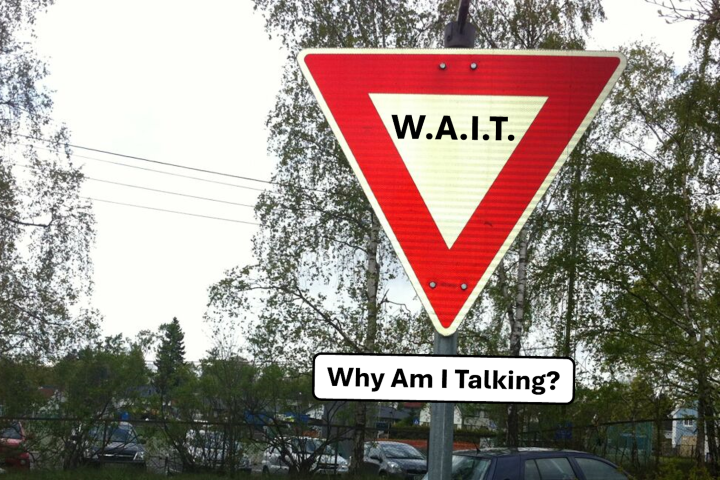
W.A.I.T.
Why am I talking? This is an old well-used acronym, which is worth revisiting, or learning for the first time, if that’s the case.
When you are talking to others, it can be helpful to ask yourself (before if possible, or even when you pause during your sharing):
Why am I sharing a similar experience, after someone else has shared theirs?
Why am I offering this advice?
Why am I sharing these details of my life?
We often think that we are deepening our connection with someone when we share of ourselves. Or that we are helping by sharing our experience or advice.
Sometimes it might. But sometimes it doesn’t.
Think about it. Are you building rapport, creating connection, deepening friendship, furthering understanding.
Or is it creating a feel-good experience in you alone?
How many times have you listened to someone else prattle on about some details of a project, experience, personal life, or a recent holiday and you wondered why they were telling you all of that? Besides, to be honest, you were thinking about something else and their words weren’t even being heard.
But are you that person who prattles on sometimes?
In your professional setting, there may be times when you need to explain something or offer an idea or feedback. Can you do that without going around the houses? Can you be concise and check to see if your thought was heard and understood?
If you are a person who “processes out loud”, you might need to become aware of your impact, especially if you sometimes grab everyone’s attention while you think verbally. Is this a regular habit? Is it constructive? Are they tired of it?
It’s helpful to stop and think about this. When you are talking, put a little bit of your attention on the other person or people. Are you creating engagement, are you serving them or enhancing your relationship or collaboration? If not. Maybe it’s time to stop. Maybe be curious about them and ask a question instead.
Rewired to Communicate

In Rewired to Communicate, leaders and team members learn essential conversation skills, including how to really listen, which is much harder than we think given how busy our brains are.
more info